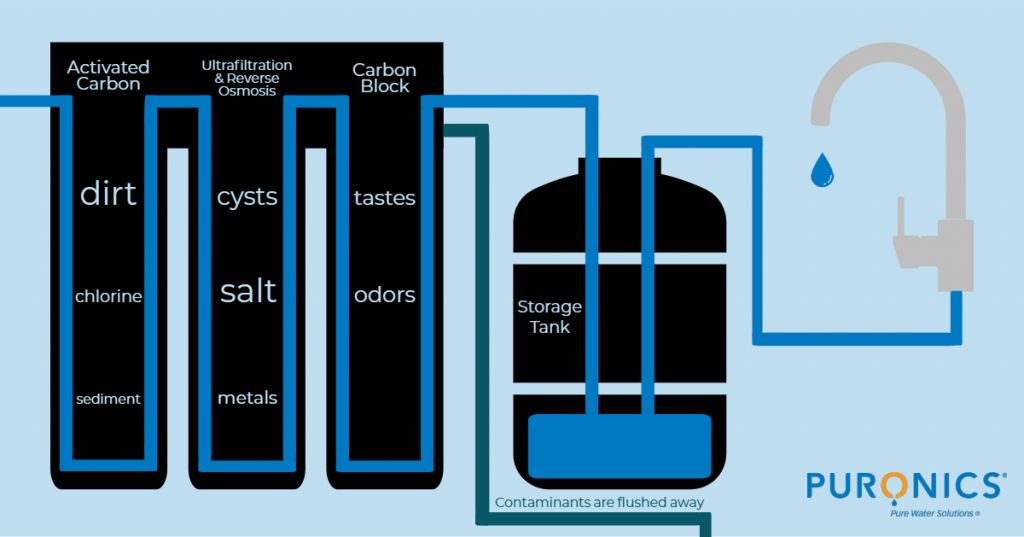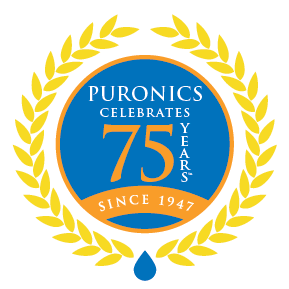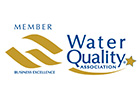Last Updated on April 12, 2021
Reverse osmosis is a great way to get purified water for drinking and cooking straight from your tap. How does it actually work? Just like it sounds, it takes a natural process, osmosis, and reverses it.
What is Osmosis?
Osmosis is constantly occurring in nature, including in our own bodies. A solution is made up of two parts, the solute and the solvent. In sugar water, for example, sugar is the solute, and water is the solvent. If you put a highly concentrated sugar water solution on one side of a semipermeable membrane and a lower concentration of the solution on the other, the solvent (water) will start to move through the membrane to the side with the high concentration to dilute it and make the concentration of the solute (sugar) more equal.
What is Reverse Osmosis?
Instead of moving from a high concentration solution to an equal concentration, reverse osmosis uses pressure to force a solution through a semipermeable membrane to a lower concentration. Pressure is applied to the water to push it through the membrane. Contaminant molecules are larger than water molecules, so only water can pass through. The removed contaminants are flushed down the drain.
Reverse Osmosis System Process
Most reverse osmosis systems, like the Micromax™ 7000, have additional pre- and post-filters. Here’s how the system as a whole works:
- Prefiltration – activated carbon filter reduces dirt, rust, sediments and chlorine
- Ultrafiltration – reduces waterborne cysts like cryptosporidium and giardia and reduces particulate matter as small as 1/10,000 of a micron
- Reverse Osmosis – reduces dissolved solids such as salt and dissolved metals such as lead and chromium; contaminants are flushed down the drain
- Storage – purified water is stored in a sterile tank
- Postfiltration – activated carbon block polishes water and reduces unpleasant tastes and odors

What’s Reduced During Reverse Osmosis?
Here are some of the contaminants that are reduced:
Arsenic naturally exists in groundwater, but it can cause skin problems, cancer and problems with the cardiovascular and nervous systems.
Cadmium can contaminate water through erosion of natural deposits, corrosion of galvanized pipes and industrial waste. It can cause short-term nausea, vomiting and diarrhea as well as long-term kidney, liver, bone and blood damage.
Chromium 6 is an industrial chemical that is a known carcinogen and has been linked to various cancers and other health issues.
Lead gets into our water supplies mostly through lead service lines and industrial waste. It is most dangerous for children, and it can cause intellectual and developmental problems. Lead can also damage the brain, kidneys, bone marrow, nervous system and red blood cells.
Nitrate/Nitrite can contaminate your water supply through fertilizer runoff, animal waste and septic tank waste. It is dangerous for pregnant women and infants under 6 months of age.
The Puronics Micromax™ 7000 can reduce up to 99% of contaminants.
How to Get a Reverse Osmosis System for Your Home
Do you want to have purified water available right from your tap? Learn more about installing a reverse osmosis system for your home by contacting us. We’ll discuss your concerns about your water and help you get set up to start enjoying clean, filtered water straight from the tap!
You can also check out our other blog posts for more information about water treatment.
Note that contaminants or other substances which can be reduced or removed by a reverse osmosis system are not necessarily in your water.
© Copyright 2019 Puronics, Inc. All rights reserved.

 Puronics, Incorporated
Puronics, Incorporated




I want to know if it removes fluoride.
Hi Susana, it removes fluoride as well.
What is the ph levels. Does it iodize?
The resulting pH depends on incoming pH level. Generally, reverse osmosis lowers pH. You can raise the pH by adding an alkaline post-filter, which adds minerals back to the water. Reverse osmosis does not add iodine to the water.